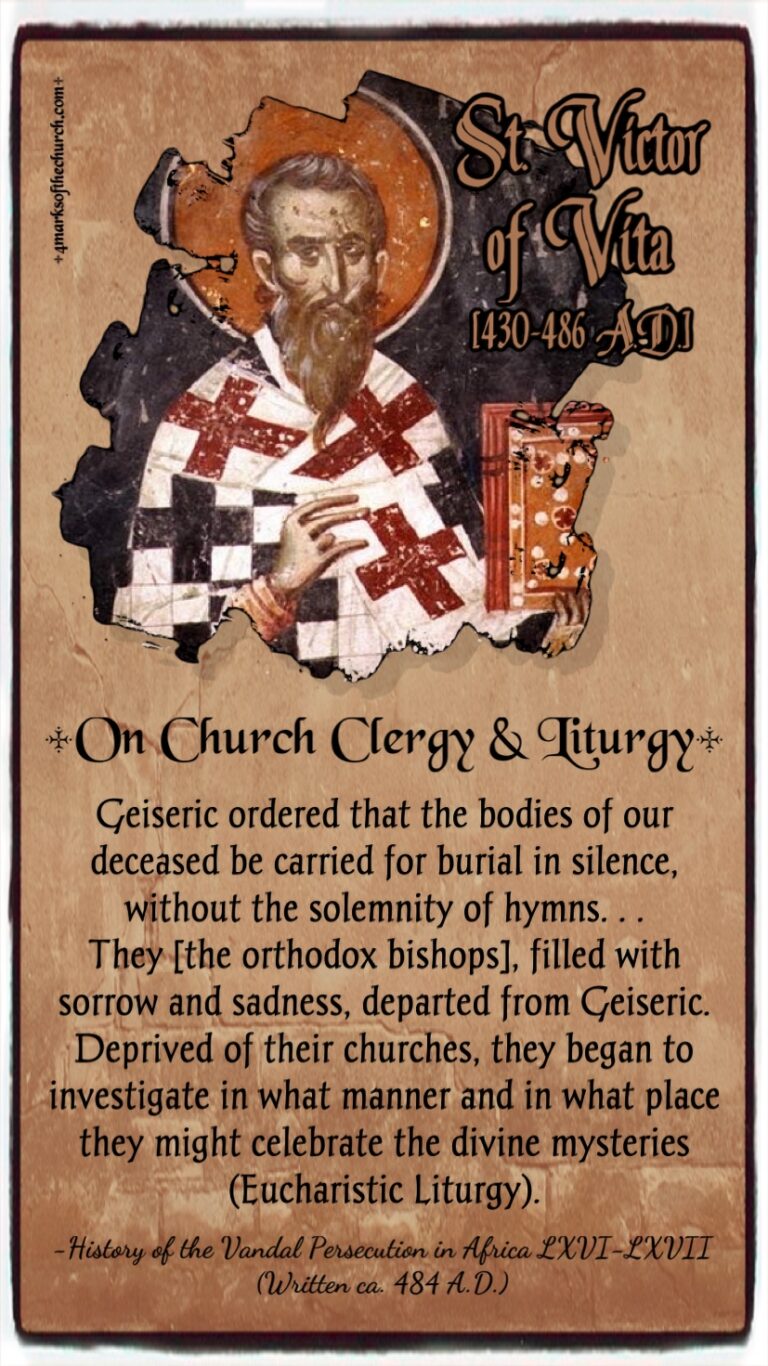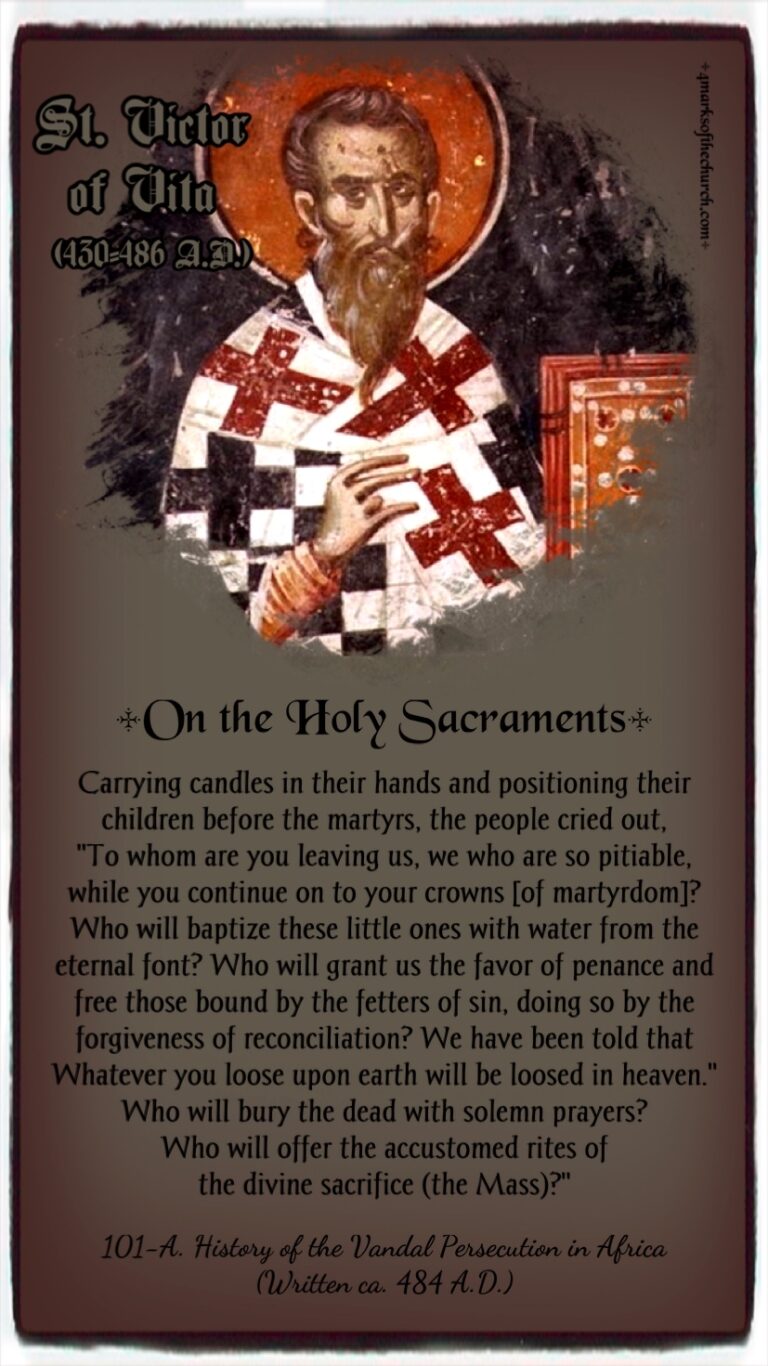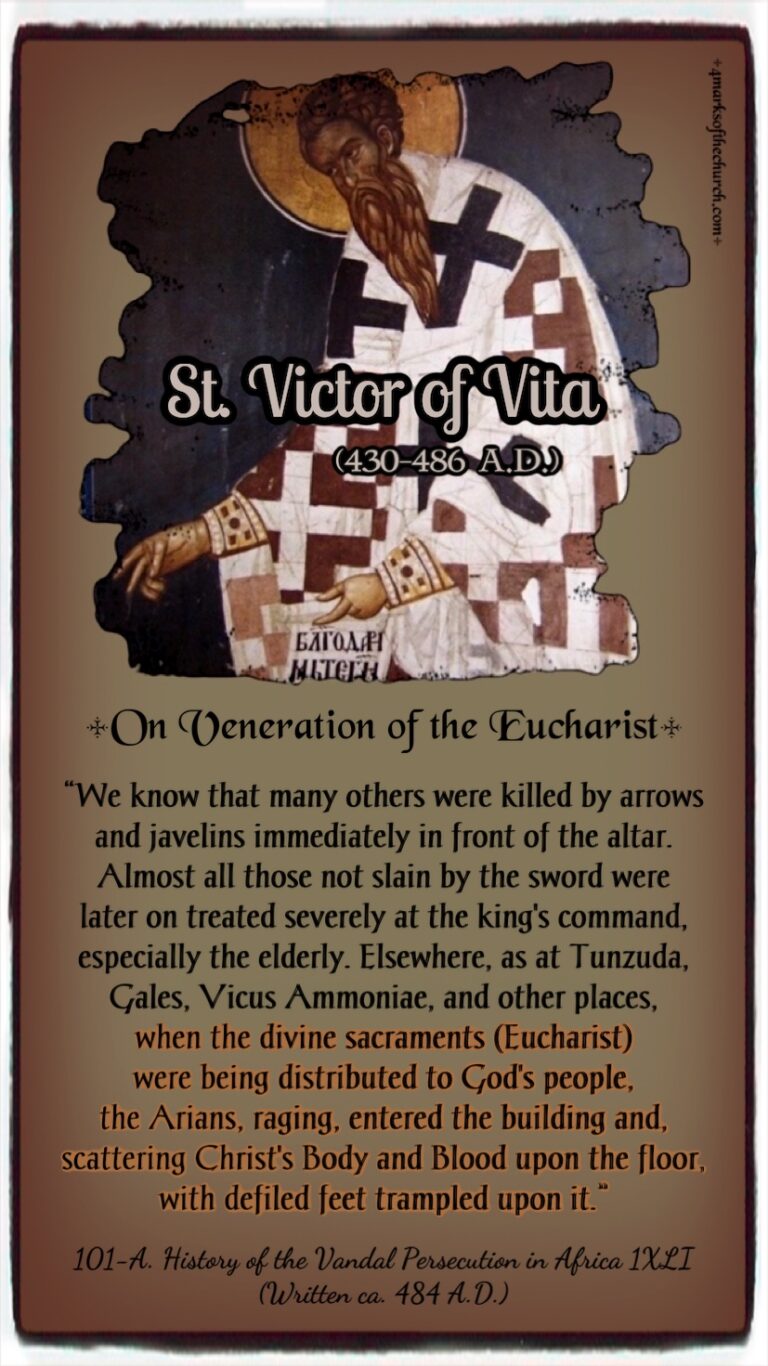Victor of Vita
Scroll for quotes→




Victor of Vita (430-486 A.D.), also known as Victor Vitensis, was an African bishop of the Province of Byzacena (called Vitensis from his See of Vita) during a period when Arian Vandals had overrun Italy (sacking Rome in 455) and also northern Africa creating social, political, and religious upheaval. Catholics experienced persecution under these heretical invaders as clergy were exiled, churches and other buildings were confiscated, and orthodox worship was forbidden. Victor, who was a priest living in Carthage at the time, recorded much of these trials in his work Historia persecutionis Africanae Provinciae, temporibus Genserici et Hunirici regum Wandalorum (A History of the African Province Persecution, in the Times of Genseric and Huneric, the Kings of the Vandals), which he wrote sometime around 484 A.D. Divided into three books, the work is a predominantly contemporary narrative of the cruelties practiced against the orthodox Nicene Christians of Northern Africa by the Arian Vandals. The first book provides an account of the reign of Gaiseric, from the Vandal invasion of Africa in 429 until the king’s death in 477; whilst, the second and third record events of Huneric’s reign (477–484) – of which Victor was an eyewitness. His history contains many documents not otherwise accessible, e.g. the Confession of Faith drawn up for the orthodox bishops by Eugenius of Carthage and presented to Huneric at the conference in 484 of Catholic and Arian bishops. The date of Victor’s death is unknown, but it is generally agreed that it was sometime after 486 A.D.
Writings:
- Historia persecutionis Africanae Provinciae, temporibus Genserici et Hunirici regum Wandalorum (A History of the African Province Persecution, in the Times of Genseric and Huneric, the Kings of the Vandals).
return to top ⇑
Quotes and Excerpts:
Historia persecutionis Africanae Provinciae, temporibus Genserici et Hunirici regum Wandalorum (A History of the African Province Persecution, in the Times of Genseric and Huneric, the Kings of the Vandals). (Written ca. 484 A.D.).
-WORSHIP IN THE EARLY CHURCH
An Anthology of Historical Sources
Volumes 1-4
Lawrence J. Johnson
A PUEBLO BOOK
Liturgical Press Collegeville, Minnesota
101-A. History of the Vandal Persecution in Africa
IXVI. (I. 5). [.. .] Geiseric ordered that the bodies of our deceased be carried for burial in silence, without the solemnity of hymns. [..]
L.XVII. (I. 5). They [the orthodox bishops], filled with sorrow and sadness, departed [from Geiseric). Deprived of their churches, they began to investigate in what manner and in what place they might celebrate the divine mysteries (Eucharistic Liturgy).
LXLI. (I. 13). The time came for celebrating the paschal feast. In a place called Regia and for the purpose of honoring the paschal day they reopened a church that had been closed. The Arians discovered this. Immediately Anduit, one of the [Arian] priests, assembled a group of armed men, urging them to attack the crowd of innocent people. Sword in hand, some entered the building; others climbed up on the roof and shot arrows into the church through its windows. Meanwhile, God’s people were listening and singing as a reader, standing on a platform, was rendering the Alleluia melody. At that very moment an arrow struck him in the throat. The book tumbled from his hands, and he fell over, dead.
1XLI. (I. 14). We know that many others were killed by arrows and javelins immediately in front of the altar. Almost all those not slain by the sword were later on treated severely at the king’s command, especially the elderly. Elsewhere, as at Tunzuda, Gales, Vicus Ammoniae, and other places, when the divine sacraments (Eucharist) were being distributed to God’s people, the Arians, raging, entered the building and, scattering Christ’s Body and Blood upon the floor, with defiled feet trampled upon it.
TIXXXIV. (II. 11). The size of the multitude of people from various regions and towns who hastened to meet God’s martyrs is attested by the roads and footpaths which in no way were large enough to hold so many people who crossed the mountain peaks and traversed its pastures. Countless were the people who came down. Carrying candles in their hands and positioning their children before the martyrs, the people cried out,
“To whom are you leaving us, we who are so pitiable, while you continue on to your crowns [of martyrdom]? Who will baptize these little ones with water from the eternal font? Who will grant us the favor of penance and free those bound by the fetters of sin, doing so by the forgiveness of reconciliation? We have been told that Whatever you loose upon earth will be loosed in heaven.” Who will bury the dead with solemn prayers? Who will offer the accustomed rites of the divine sacrifice (the Mass)?”
IL.XLVII. (II. 17). In Carthage lived a blind man, a noted citizen of that city. His name was Felix. When the feast of the Epiphany was at hand, he was at night visited by the Lord, who in a vision said to him, ‘Rise up! Go to my servant Eugenius the bishop. Tell him that I sent you. And at the hour when he blesses the font so that those coming to the faith may be baptized, he is to touch your eyes so that they may be opened and so that you may see light.’”
ILI. (I. 17). The bishop, hearing [that Felix had something to tell him], ordered the man to enter since the celebration of the [Epiphany] feast was already taking place, and the night hymns sung by the people were loudly resounding throughout the whole church.
ILLI. (IL. 17). As was the custom, the man who had been blind accompanied Eugenius to the altar. He presented the bishop with an offering of thanksgiving for his cure. The bishop, receiving it, placed it on the altar. The people’s joyful excitement could not be suppressed. [.]
return to top ⇑